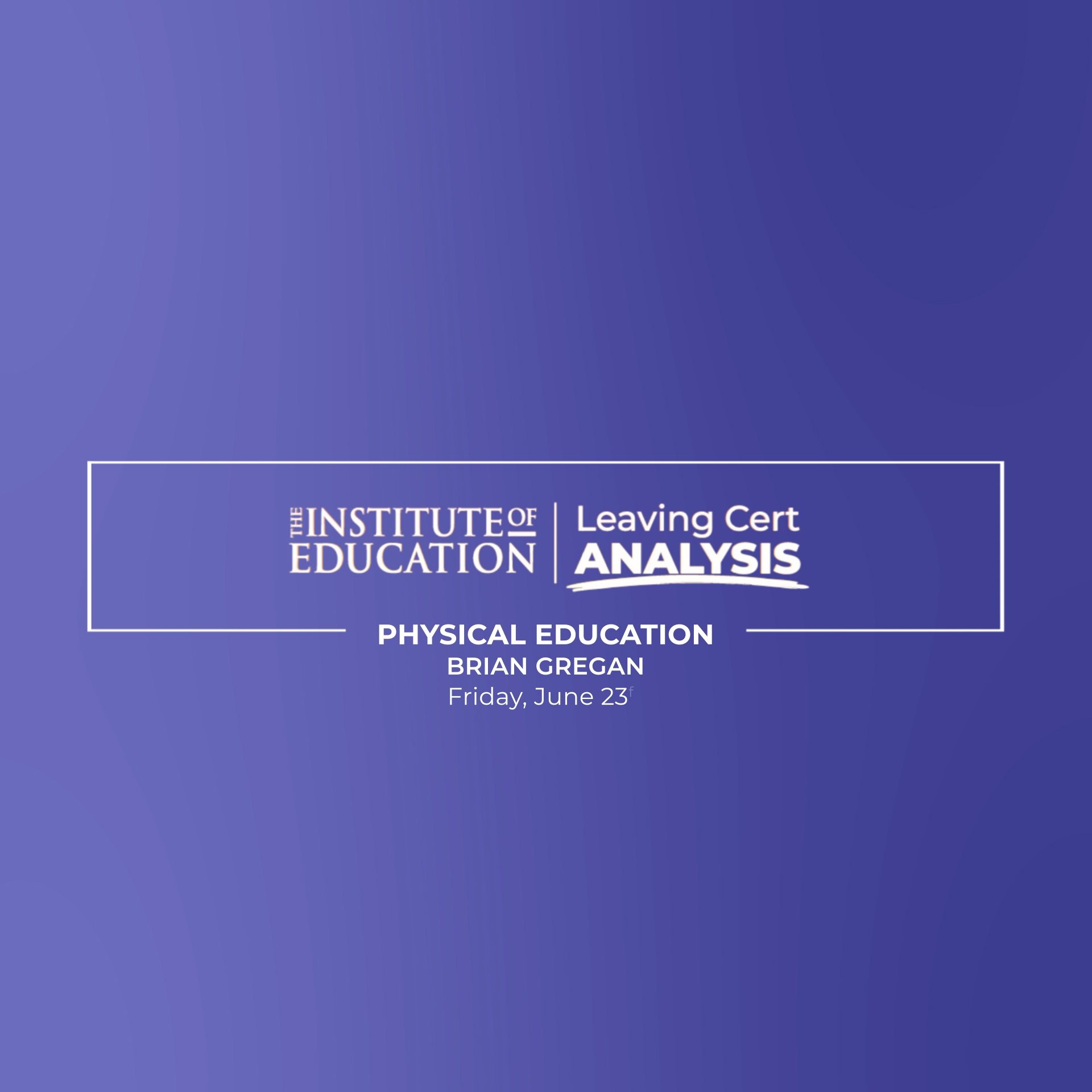Reaction to Leaving Certificate 2023 Physical Education (Higher Level) by Brian Gregan, LCPE teacher at The Institute of Education.
- A balanced paper that required students to take a wholistic approach to their study.
- Some choice meant that students could avoid certain more challenging or abstract topics and draw on their own experiences.
This year students had more limited choice than last year but entered the exam with two projects (worth 50% of their grade) completed.
Section A was short questions that required students to answer 10 of the 12. In general, most will have found eight questions quite comfortable and succinct. The expected topics of Newton’s laws, planes, and energy systems appeared. How students select the other two will be based on their interests and level of preparation. Many students focus only on their personal interest or performance while avoiding topics relating to more social or participatory elements. Those who were methodical in following the syllabus’ stated learning outcomes won’t be worried, but that requires a more wholistic mentality when approaching PE.
Section B was a case study on coaching and many students will be pleased to see questions on performance optimization. Many students who take PE are interested in perfecting their own abilities and so this section would fall into a common area of interest. The questions themselves were very manageable. The question on feedback was particularly nice, but assessed an area that few relish.
Section C’s Q14 had a thematic overlap with the case study, while Q15 asked about performance enhancing substances. This aspect of the ethic topics always draws a lot of discussion, so students will be glad to see it appear. Q16 had nice parts A and B, but part C on artistic and aesthetic elements might challenge some. Most students are familiar with purposive sports where victory is secured through the clear achievement of discrete goals, and so discussing this aspect is often outside of their everyday experiences. Finally, Q17 balanced familiar elements like recovery with more advanced skills like interpreting training plans. In general, this section provided an interesting fusion of topics and approaches such they were a well-balanced reflection of the range of course topics and student ability.
As a whole this was a balanced paper that required students to approach physical activity from various perspectives – some personal, some societal. A student who adopted a wholistic and methodical approach will do well, but even those who are narrower in their focus will find plenty of opportunities to earn marks.

